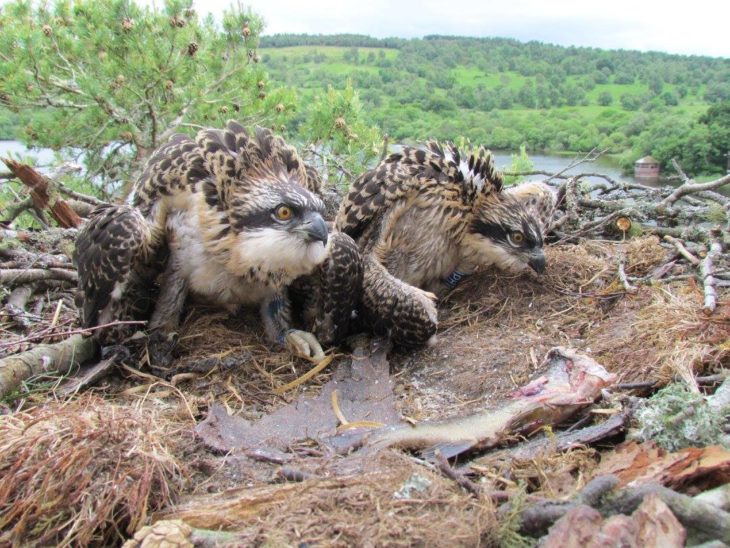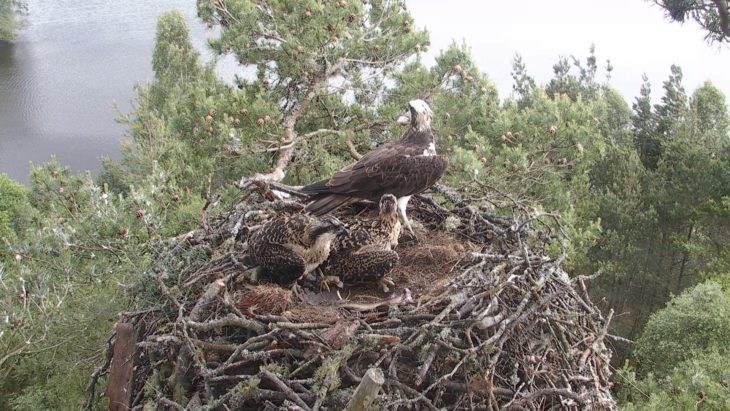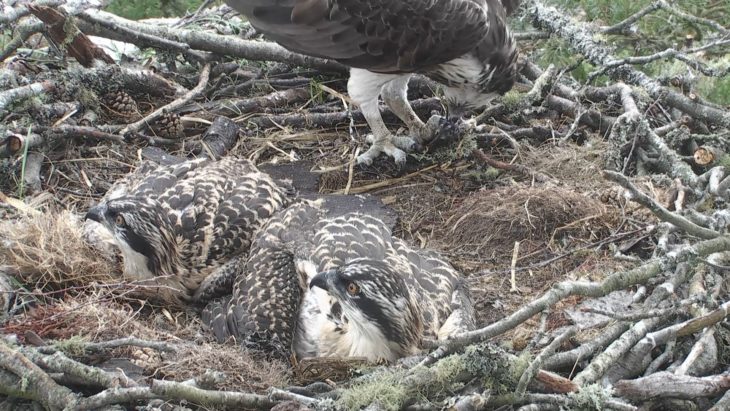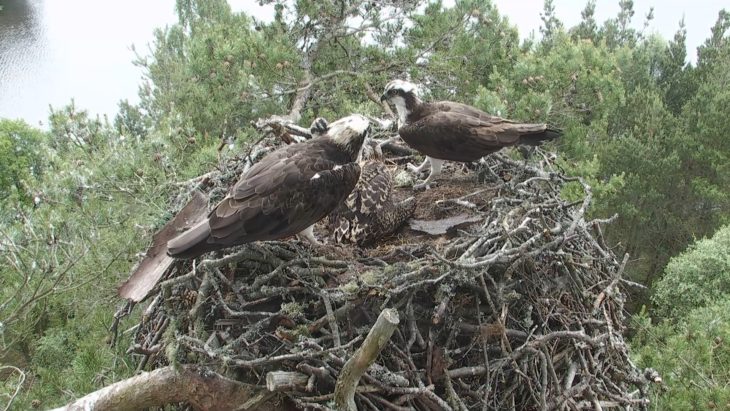Ringing Chicks and Osprey News
Yesterday proved to be an exciting day at Loch of the Lowes as the osprey chicks were ringed. It is important to do the ringing while the chicks are still quite young – before they show any sign of fledging behaviour. Our chicks hatched early in the season and are getting quite big, so the decision was made to ring them yesterday afternoon.
The ringing went smoothly and quickly, with minimal disturbance to the birds. Our expert ringer Keith Brockie climbed the tree and put the rings on the chicks’ legs without removing them from the nest.

Osprey chicks instinctively react to danger by lying flat in the nest – their dappled feathers provide excellent camouflage. The ringer can simply ease out one of their legs and carefully attach the small ring as they lie still.
Based on the wing length we believe the older chick (now PH2) is a female and the younger chick (PH1) is a male – females are generally a little larger. The new rings will be very useful for us as the chicks are getting older and the size difference between them is now less noticeable.
Throughout the ringing process both LM12 and LF15 circled high above the nest, keeping an eye on the events below. Afterwards LF15 (the female) spent some time flying around the Loch to ensure that the human visitors had been successfully chased off. LM12 (the male) took a more laid back approach – as soon as the ringing was over he perched on his favourite tree, allowing his mate to finish patrolling the area. Once she was satisfied that the coast was clear, LF15 returned to her chicks who perked up right away and normal life was resumed.

PH2 and PH1 are not yet very mobile but have been tentatively moving around the nest and stretching their wings. Their mother can often be found perched on the side of the nest, keeping a careful watch over her chicks and feeding them when LM12 delivers fish.

Nest renovations have started in preparation for pre-fledging behaviour. LM12 has been bringing in sticks and small branches so that the nest can be adjusted to a flatter, platform shape. This will provide more space for the chicks as they move about and flap their wings, building their strength in preparation for fledging.
At around seven weeks of age the chicks will start to lift off the nest while flapping their wings. The oldest chick is now five weeks old and the younger one is five days behind that, so it will be a few more weeks before we see this behaviour. The smaller males often fledge before their heavier sisters so it will be interesting to see which one fledges first – the younger male (PH1) or the older female (PH2)?

Jane Hamilton
Help protect Scotland’s wildlife
Our work to save Scotland’s wildlife is made possible thanks to the generosity of our members and supporters.
Join today from just £3 a month to help protect the species you love.
Preface
Yesterday proved to be an exciting day at Loch of the Lowes as the osprey chicks were ringed. It is important to do the ringing while the chicks are still …
